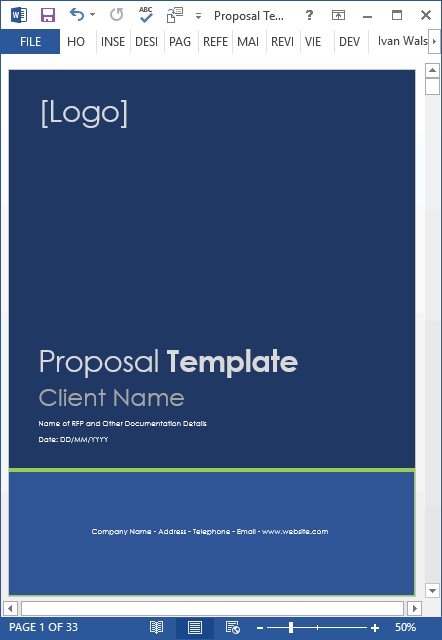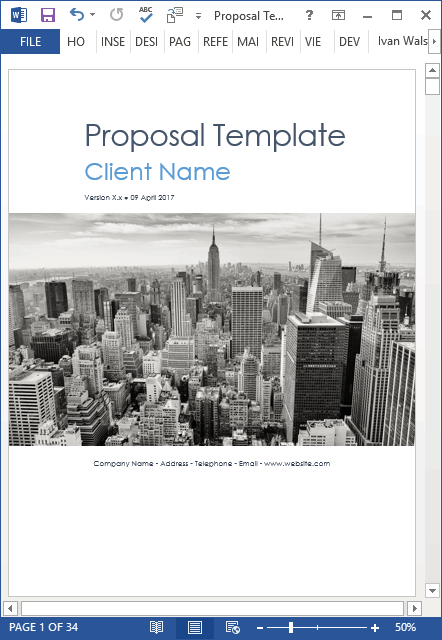Business Writing
Checklist – Document Controls for Business Proposals
Author: Ivan at https://twitter.com/klaritidotcom
When writing large business proposals, it can be difficult to coordinate inputs from multiple authors who are drafting sections independently at different times.
Proposal writers should carefully consider how to manage document storage, organization, naming conventions, and distribution. To ensure you deliver a quality proposal, take time to plan your approach to coordinating all aspects of the document delivery lifecycle.
While it takes time to do this at the start, you’ll see the rewards once the project gets into motion.
In the following article, we explain how to put document controls in place to manage the proposal development lifecycle.
What is document control?
Document control is the process of managing and tracking documents to ensure they are approved, updated, and published as needed.
What is the benefit of document control procedures?
In short, document control procedures ensure that only the most current versions of documents are used, reducing potential errors and confusion from working with outdated information.
Once implemented, document controls help you (and team members) find the right documents when needed for reference or auditing purposes. In addition, implementing approval workflows and retention policies through document control provides accountability and transparency.
Finally, having formal controls in place to track and manage documents ensures improved access, security, better quality controls and governance.
Checklist – Document Control for Business Proposals
So, how can you manage all aspects of the proposal development lifecycle?
Let’s start at the top and work our way through:
Templates
Increase efficient and save time by a common template for all proposal writers and contributors. State that content received in other formats, such as email, will be rejected.
Share this mandate with senior management so they endorse your commitment to developing a standards based approach to your bids. Note: remember to create templates for both Microsoft Word and Excel.
Download – Business Proposal Templates
Naming Conventions
Use a specific naming convention for all project files. Don’t assume others know how to apply these conventions. If necessary, hold a short 30 min workshop.
Provide examples, answer questions, and troubleshoot any issues that arise.
This encourages buy-in and while there will be some dissenters, most of the team will get on board if they understand how it works.
Network location
Setup a dedicated folder on the network for the Proposal Writing team. This keeps prying eyes away and allows your team to work on the documents in private. This also avoids writers hoarding documents on local drives and creating their own little power base.
Project Folders
Create a series of folders for different parts of the bid, for example, for reference material, boilerplate text, clarifications, presentations, and, if it makes sense, for each of the writers. Structure it so it makes sense to you. Also, create an Archive folder where you can paste files you no longer need but don’t want to delete, or at least not yet.
Access Rights
Speak with your IT administrator and give read/write access to the writers and, depending on your review process, read/write access to reviewers as well. This may depend on the tools you’re using to write the documents. But don’t let the world see what you’re writing.
Keep the project documents under control and restrict access to only those who need to work on the documents.
Source Control
I use software, such as CVS, to place documents under source control. This means authors must ‘check out’ documents before editing.
I can also see what changes, deletes, errors have been made to the document and compare it to past versions. This works very well if you want to have a master copy that writers paste their materials into.
You can use other software that allows many writers to work on the same document at the same time but they need to merge their content in the final draft which doesn’t always work.
Version Control
If you don’t use tools like CVS, make sure that the Microsoft Word documents are under some type of document control. This gives you a limited but useful trail of changes to the document and shows others what changes have been made. Adobe Acrobat (not the Reader) also has editing and commenting tools. Online editing software is also worth exploring.
Archive Process
Finally, when the project is finished, move the project documents to a specific archive location.
While you may never need to read these again, for legal reasons you need to keep them – and, of course, the day may come when you want to check something. In either case, move files to this location, set access restrictions, and back up the files.
Document control checklist
Here’s a recap on what to include in your document control checklist:
- Document identification – Title, author, version number, date, etc.
- Format – Fonts, margins, styles follow standard templates
- Review and approval process – Signoffs, review timeline, approvers specified
- Distribution list – Recipients and access permissions defined
- Change management – Process for updates, revisions, replacements
- Storage and retrieval – Filing convention, repository, search tags
- Access control – Password protection, encryption, user access levels
- Retention schedule – Timelines for archival and destruction
- Version control – System to identify and track iterations. MS Word has a very useful Track Changes option. In Word, click Review on the ribbon (top toolbar), then select Track Changes.
- Auditing – Review schedule, logs of access and modifications
- Security and backups – Protection against loss or unauthorized changes
- Obsolescence – Procedures to remove/archive outdated documents
- Training – Instructions for document control protocols
- Compliance – Adherence with regulations, standards, and data retention policies
- Continuous improvement – Conduct regular audits and reviews of processes
Use this checklist to ensure all aspects of document control are implemented for each project.
Download – Business Proposal Templates
Summary
Expect multiple documents in your inbox when you start writing your proposal. Remember, in addition to your documents, you also need to manage the agency’s documents, responses, and support information, for example, bank guarantees. However, you can coordinate the proposal document lifecycle by creating standards, templates, and encouraging your team to follow guidelines.
Recommended Books
- Proposal Writing for Clinical Nursing and DNP Projects
- Federal Government Proposal Writing: Learn federal proposal writing from ground zero
- Handbook For Writing Proposals


